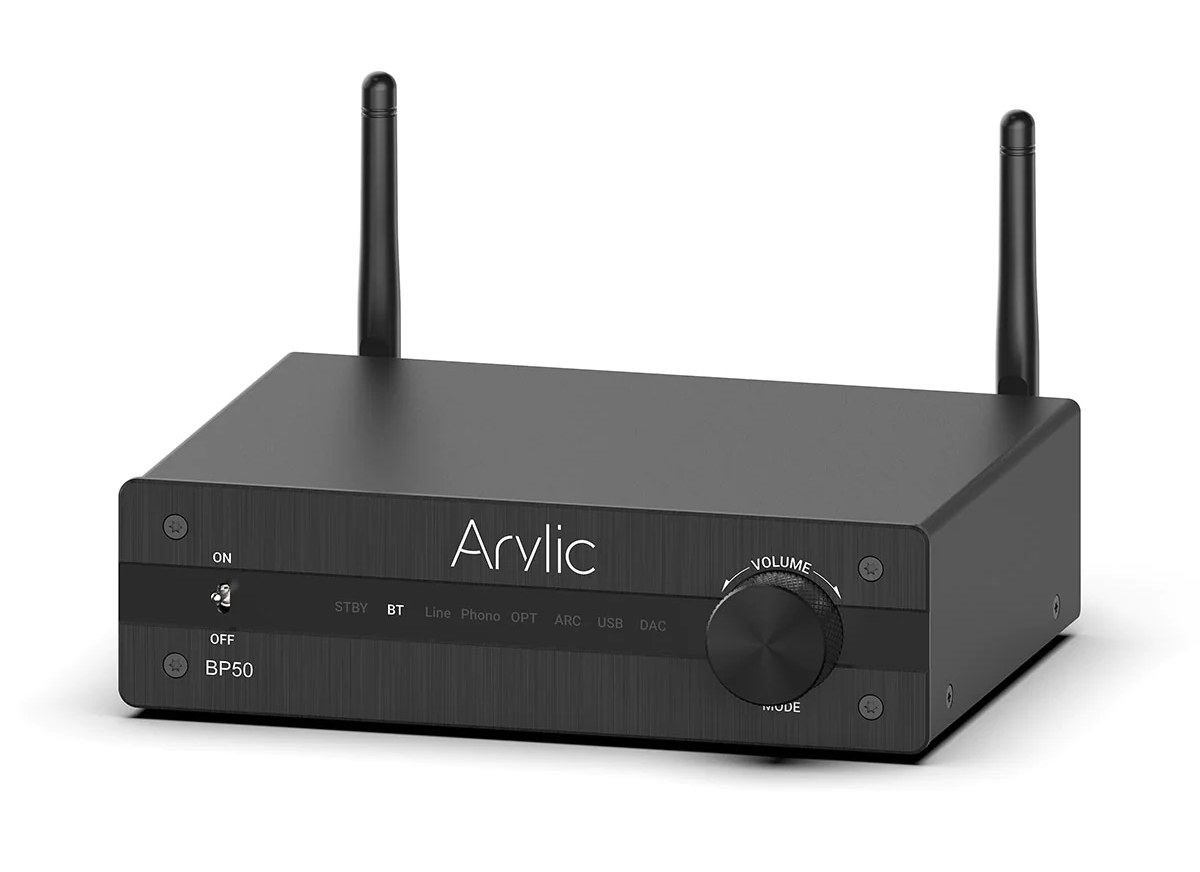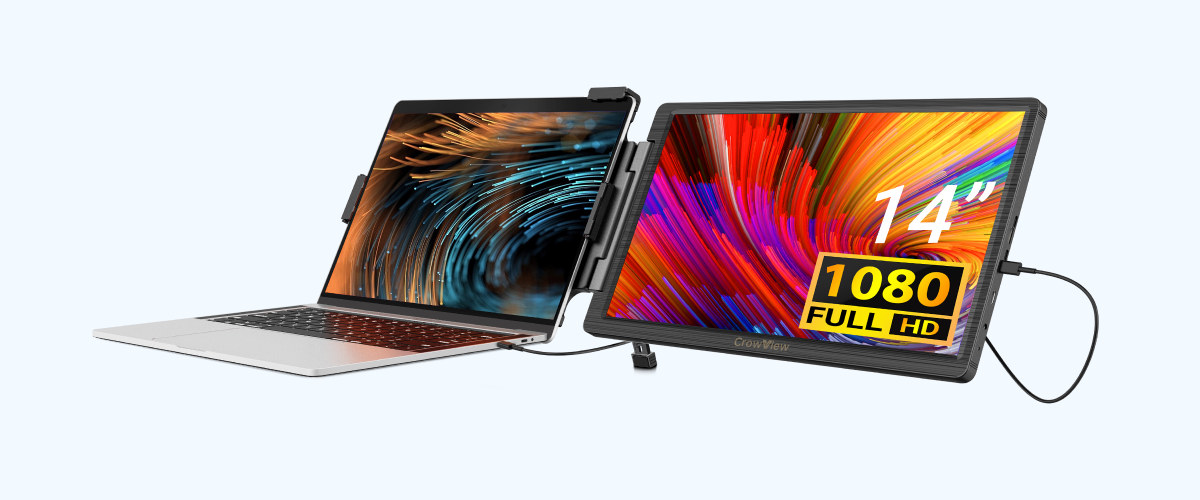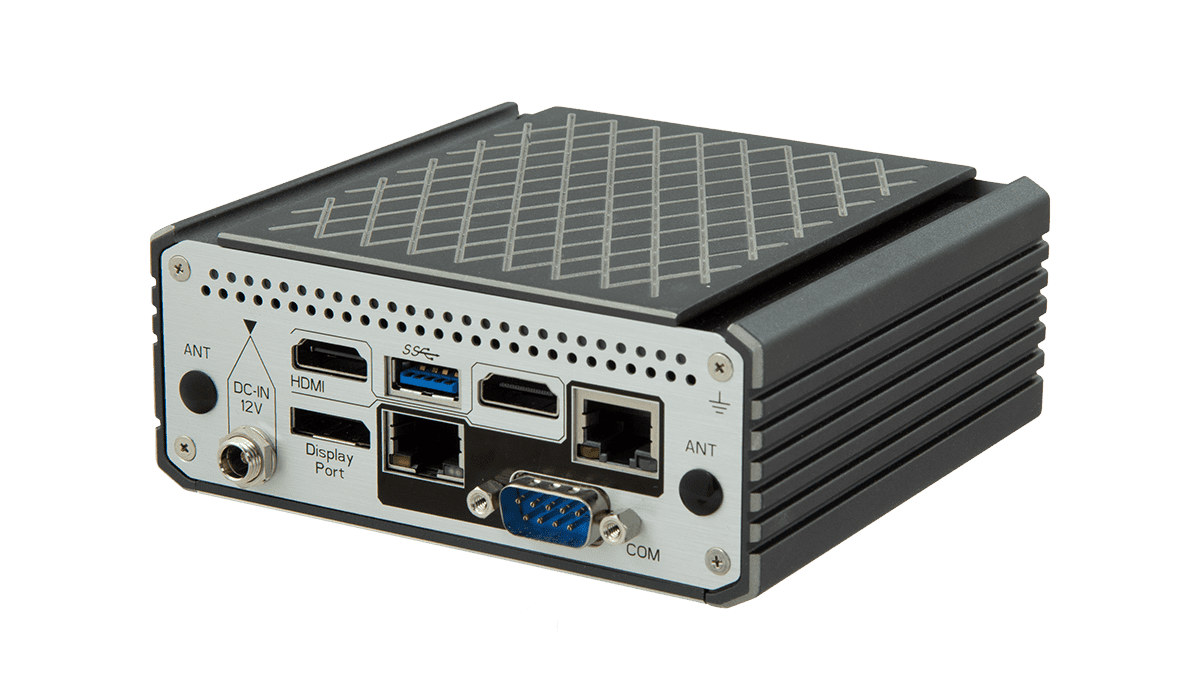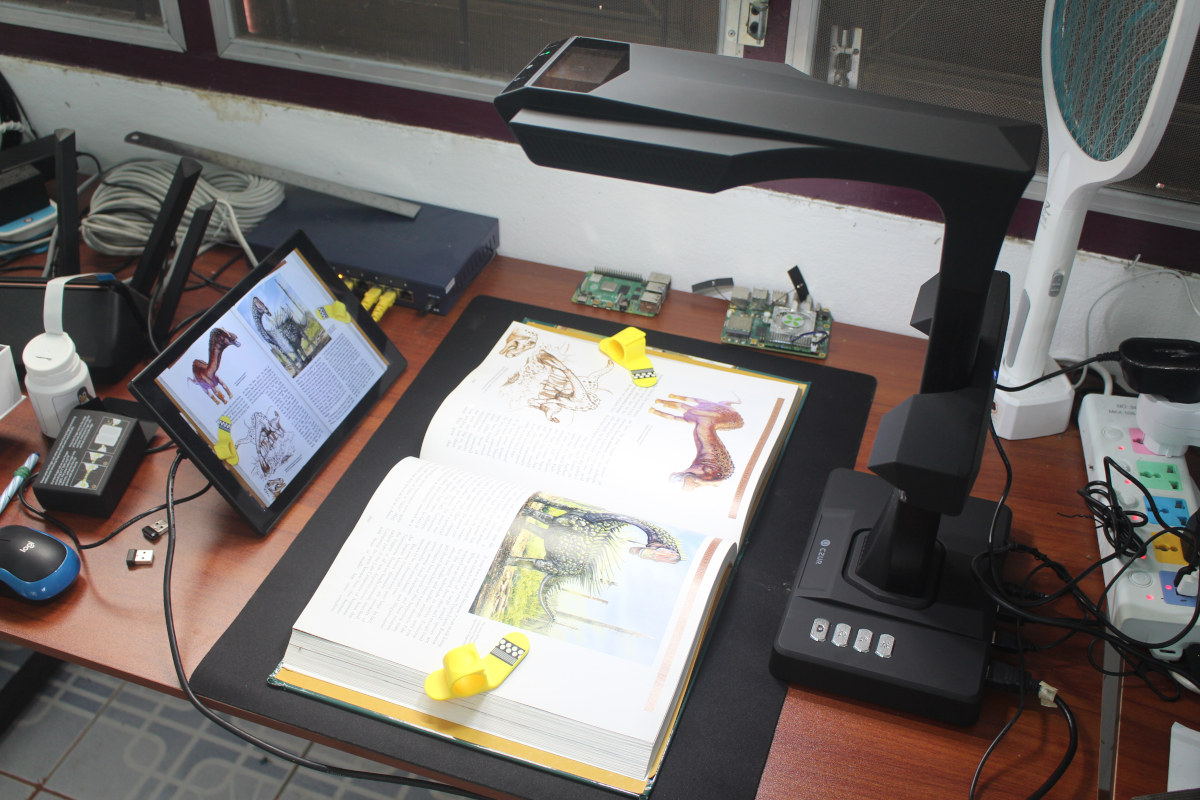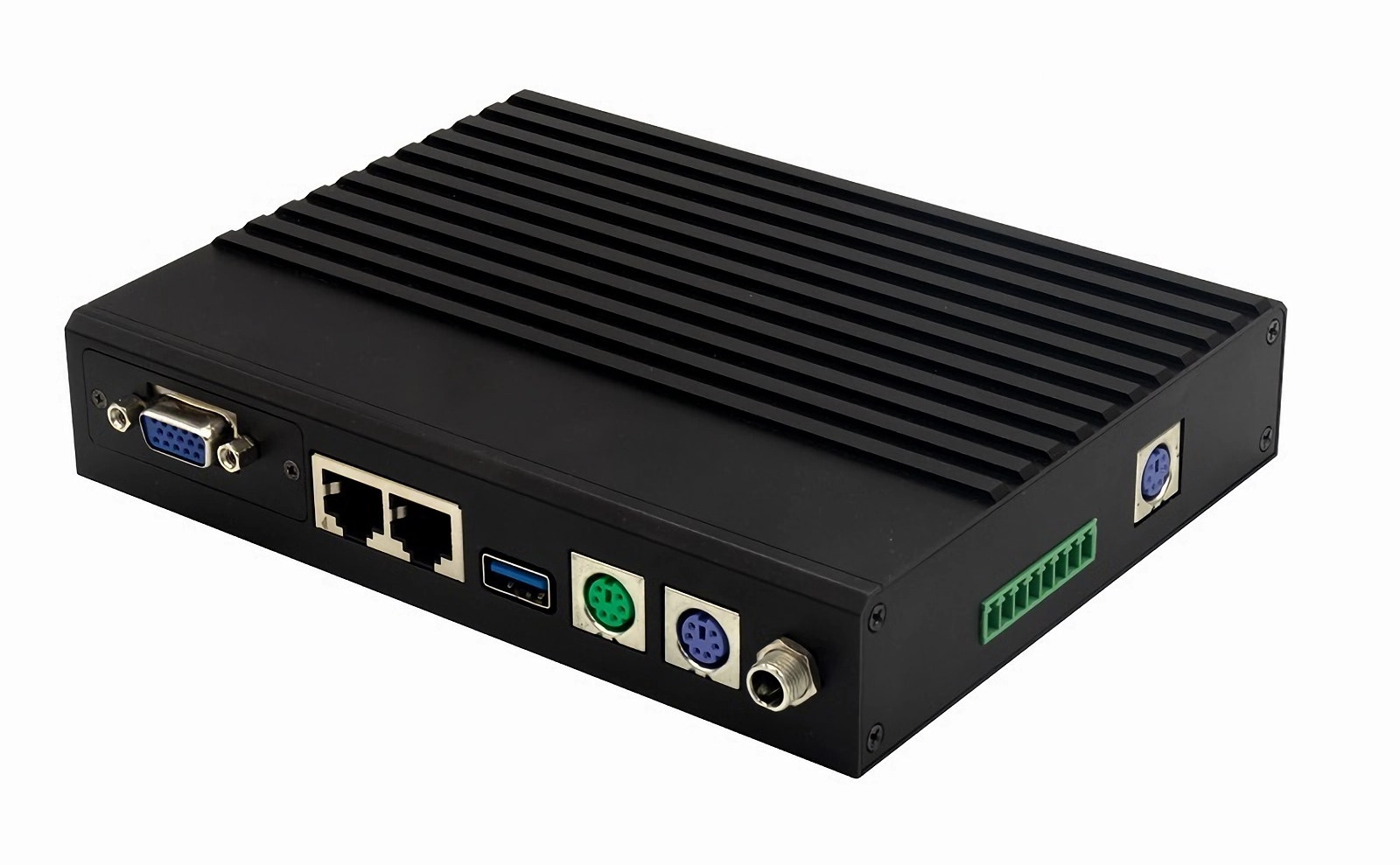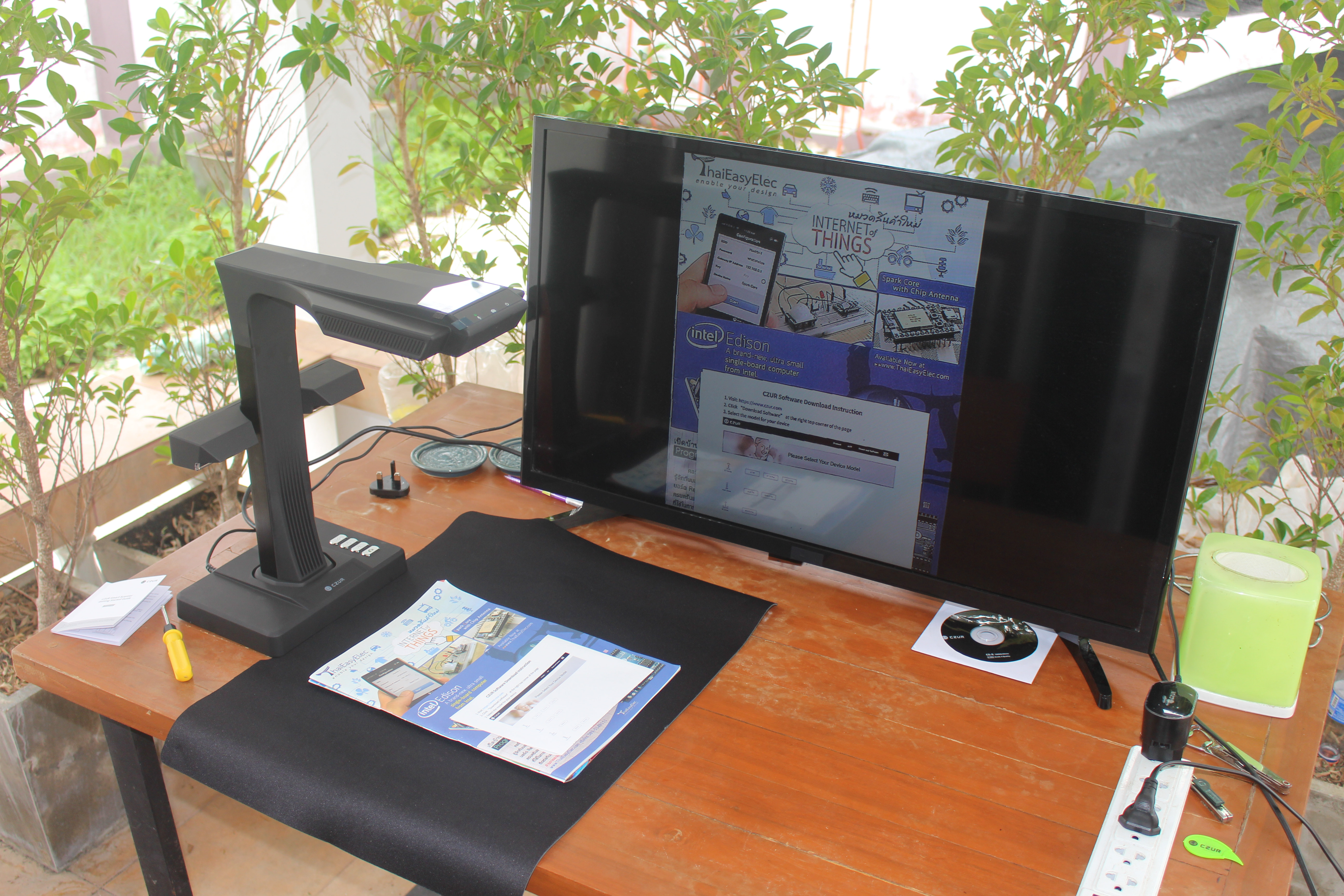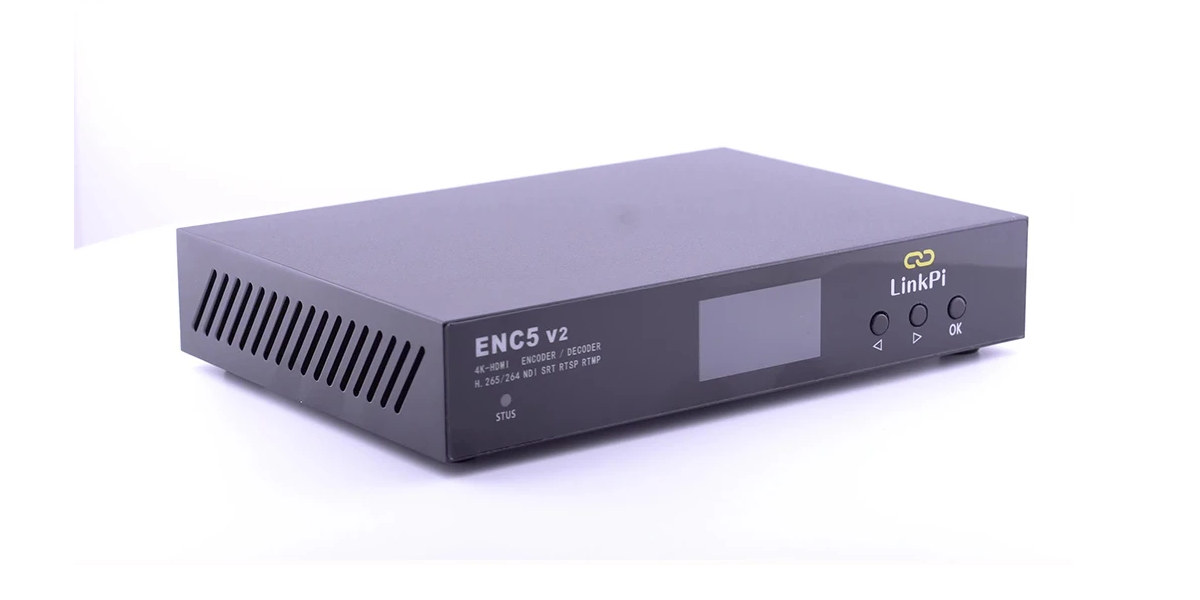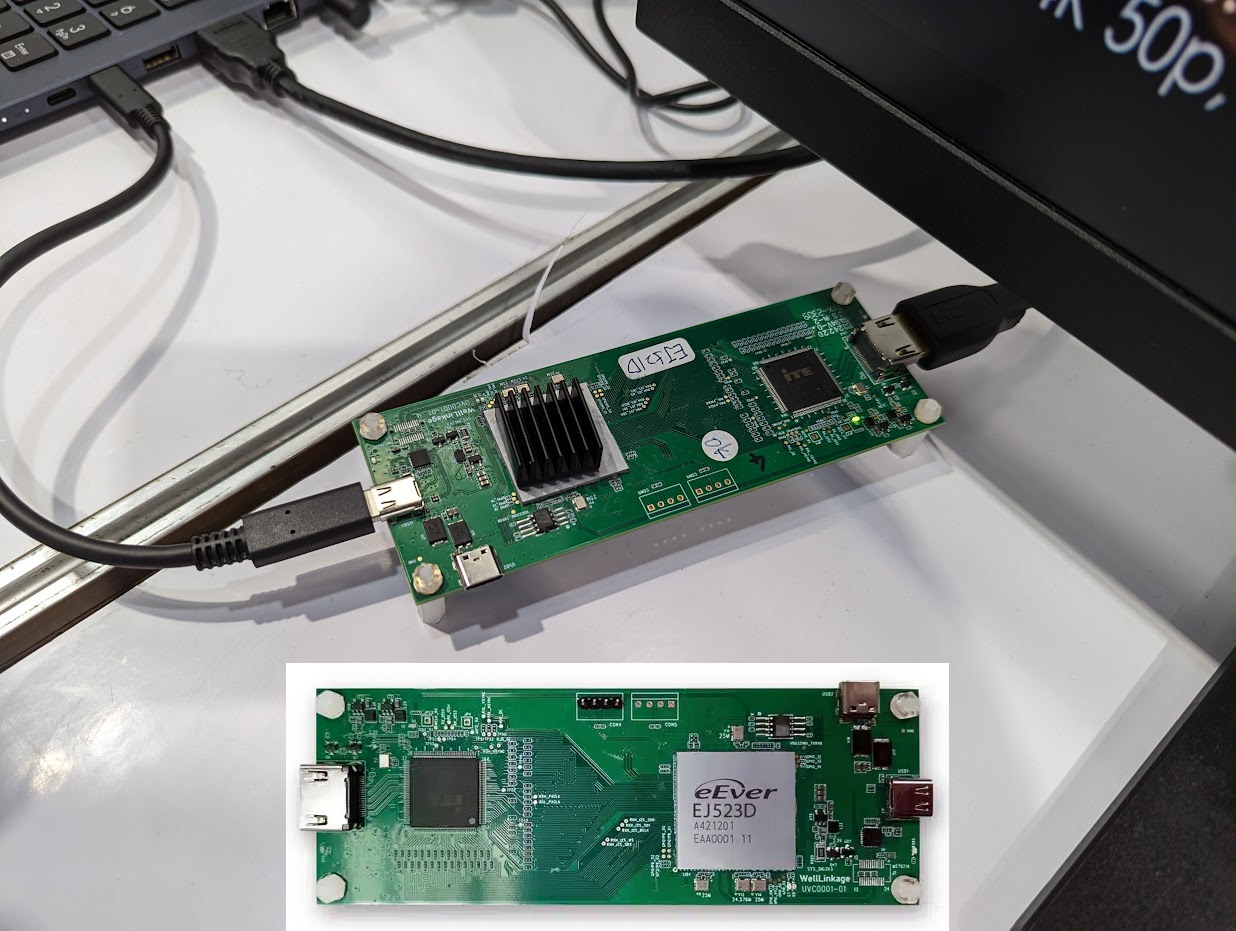Arylic BP50 is a low-cost Bluetooth 5.2 preamplifier based on ESS ES9023P 192kHz/24-bit DAC (see datasheet) with support for aptX HD, aptX LL, aptX Adaptive, AAC, and SBC audio codec. The amplifier can also transmit to two Bluetooth headphones simultaneously and offers various ports such as HDMI ARC in, Phono in, Optical in, RCA in, Sub out, Optical Out, Coax Out, RCA Out, and more. Arylic BP50 specifications: Bluetooth connectivity Version 5.2 with up to 15m range 2x Bluetooth Tx to connect up to 2x Bluetooth speakers or earbuds 2x Bluetooth Rx to connect up to 2 Bluetooth transmitter devices Bluetooth audio codecs Tx: aptX HD, aptX, aptX AD, aptX LL, AAC, SBC Rx: aptX HD, aptX, aptX AD, AAC, SBC Audio Frequency Response – 20Hz to 20Khz THD + N/SNR – 0.05%/>95db Codecs from USB storage – MP3, MP4, WMA, MOV, M4A, AAC, FLAC (96kHz/24-bit), APE Inputs Line in […]
CrowView adds a 14-inch portable monitor to your laptop for $115 and up (Crowdfunding)
Elecrow CrowView is a lightweight 14-inch portable monitor designed to be attached to your laptop adding a secondary monitor to it through a clamping structure that works with laptops having a 13-inch to 16.5-inch display. We’ve seen this type of laptop monitor extension for years, and you’ll find various models on Amazon. But the Elecrow is now offering the CrowView at a significantly lower price than competitors especially if you pledge $114.90 for the super early bird reward on Kickstarter. The regular price ($179) can still be interesting as in this price range you’d usually get an 11-inch or 12-inch display. CrowView specifications: 14-inch IPS display with 1920×1080 resolution, 60 Hz refresh rate, 400 nit brightness Compatible with 13-inch to 16.5-inch laptops with 4 to 8mm thick displays thanks to a telescopic snap 230° hinge enabling face-to-face mode. Ports Mini HDMI port for video input 2x full-featured USB Type-C port […]
ARBOR ELIT-1060 compact, fanless Celeron N6210 terminal supports up to three 4K displays
ARBOR’s ELIT-1060 triple display terminal is a rugged fanless mini PC powered by an Intel Celeron N6210 dual-core Elkhart Lake processor with two HDMI 2.0 ports and one DisplayPort connector each supporting up to 4Kp60 resolution. The system comes with a 4GB DDR4 SO-DIMM, 32GB eMMC flash, two 2.5GbE Ethernet ports, an M.2 socket for wireless expansion, several USB 3.0/2.0 ports, and one RS232/422/485 serial port. While the company markets it for “high-intensity digital signage applications”, I could also see it being used in various other applications thanks to its networking capabilities and expansion ports. ARBOR ELIT-1060 specifications: SoC – Intel Celeron N6210 dual-core Elkhart Lake processor up to 2.6 GHz with Intel UHD graphics System Memory – 4GB DDR4 SO-DIMM memory expandable to up to 32GB RAM Storage 32GB eMMC flash M.2 M-key socket (2260/2280, PCIe Gen.3 x2/SATA interface) for an NVMe or SATA SSD Video Output 2x HDMI […]
CZUR ET24 Pro book scanner review with Ubuntu 22.04 Linux
The CZUR ET24 Pro is a professional book scanner that works with Windows, macOS, and Linux, so I decided to review it in Ubuntu 22.04 since we are fans of hardware that can interface with Linux at CNX Software.
If you haven’t already, I strongly recommended reading the unboxing part of the CZUR ET24 Pro review, as we go through the specifications, show the various interfaces of the scanner, showcase the various accessories, and also try it out with the HDMI interface in presentation/preview mode. It will help you better understand the second part of the review, where we’ll connect the CZUR ET24 Pro scanner to a Ubuntu 22.04 laptop using the provided USB cable.
Banana Pi BPI-KVM – A KVM over IP solution based on Rockchip RK3568 SoC
Banana Pi has started working on the BPI-KVM box based on a Rockchip RK3568 SoC, but it’s not a mini PC, and instead, it is a KVM over IP solution designed to remotely control another computer or device as if you were on-site with, for example, the ability to turn on and off the connected device, access the BIOS, and so on. Commercial KVM over IP solutions used to be expensive, but people have started to use Raspberry Pi SBCs with an expansion board such as the PiKVM v3, and more recently Raspberry Pi CM4-based KVM over IP solutions have been launched for under well $200. Seeing the popularity of these solutions, Banana Pi has decided to join the fray with its own BPI-KVM powered by an IO-rich Rockchip RK3568 processor that provides all interfaces needed for this type of application. Banana Pi BPI-KVM (preliminary) specifications: SoC – Rockchip RK3568 […]
CZUR ET24 Pro book scanner review – Part 1: Specs, unboxing, and first try
CZUR ET24 Pro is a professional book scanner with 320DPI optional resolution (delivering up to 24MP images) that works with Windows, macOS, and Linux via a USB port, or even in standalone mode through an HDMI port that could be used for business presentations. When CZUR contacted me about reviewing a scanner, I was not sure it would be interesting, but then I was intrigued because it looks like a bedside light and I had never used this type of scanner. So I decided to give a go, and here I am with a review sample. It looks like it should be especially useful for people scanning a lot of documents or books as it’s designed for speed and should significantly improve productivity over a traditional scanner with a cover, while hopefully keeping the quality. But we’ll check that in the full review. CZUR ET24 Pro specifications Optical resolution – […]
Link Pi ENC5 v2 video encoder supports up to 5 4Kp30 HDMI inputs
The Link Pi ENC5 v2 is a video encoder with five HDMI inputs up to 4Kp30, one HDMI output, two audio jacks, Gigabit Ethernet, and a USB 3.0 port that supports RTSP, ONVIF, SRT, and NDI streaming protocols. The system appears to be based on the Hisilicon Hi3531DV200 quad-core Cortex-A53 processor and features 8GB eMMC flash for the OS, plus 4GB RAM. The USB port can be used to record videos to an external hard drive or flash drive or add WiFi or 4G/5G cellular connectivity. Link Pi ENC5 v2 specifications: SoC – Unnamed, but some of the specs are matching the Hisilicon Hi3531DV200 SoC CPU – Arm Cortex A53 quad-core processor @ 1.2GHz with 32KB l-Cache, 32KB D-Cache VPU Decode – H264, H264, MJPEG Encode – Up to 4Kp30 / 1080p60 H.264 Main/Baseline/High/ profiles, H.265 Main profile, MJPEG/JPEG Max Bitrate – 20Mbps Bit rate control – CBR, VBR, AVBR, […]
eEver EJ523D chip enables 4Kp60 video capture or streaming over USB 3.2
eEver Technology, a subsidiary of eTron Technology, has launched the EJ523D 4Kp60 audio and video capture and streaming processor with a USB 3.2 interface, along with a reference platform currently showcased at COMPUTEX 2023. Over the last few years, we’ve covered some low-cost HDMI to USB 2.0 dongles that capture video up to 1080p30, followed by HDMI to USB 3.0 dongles handling up to 4Kp30, but the latest eEver EJ523D chip will be found in USB 3.2 adapters to capture at up to 4Kp60 resolution with H.265 encoding or 4Kp30 in the NV12 format. Some highlights of the EJ523D: Video capture resolution and frame rate 4K@ 30 fps or 2K @ 120 fps with NV12 4K @ 60 fps with H.265 10-bit HDR/H.264 encoding MJPEG encoding is also supported up to 4K @ 60 fps Integrated scaler – Full range up & down De-interlacing – De-interlace i to p mode […]


